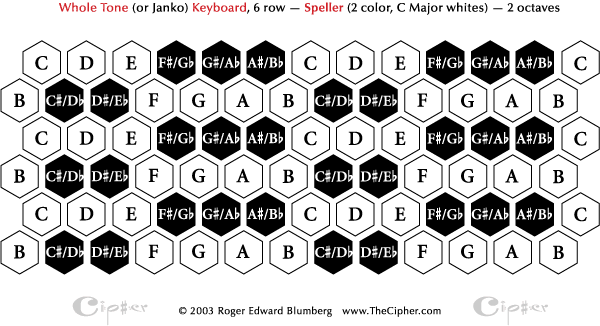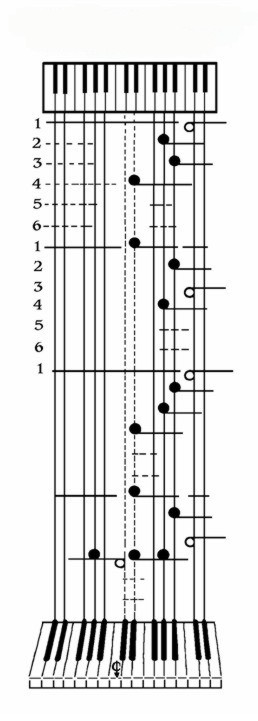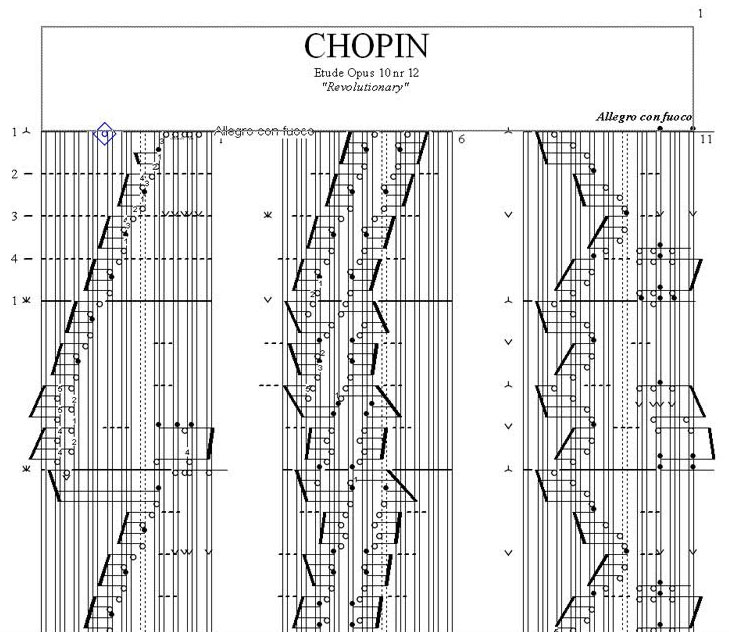Today we are going to delve into a topic that you may be fascinated to learn about. We are all familiar with the traditional piano keyboard and the traditional method of reading and writing musical notation. But believe it or not, there are alternative systems to both of these that have existed for quite some time.
Everyone knows what a traditional piano keyboard looks like since we’ve all grown up with them and are familiar with how the keys are arranged. In 1882, a new type of keyboard known as the Janko Keyboard was invented.

It was supposed to be superior to the traditional piano keyboard since it was oriented both horizontally and vertically – somewhat like a typewriter or computer keyboard. So, when you want to reach higher octaves you just have to go up and down the keyboard instead of making large leaps left and right. The other interesting thing is that all scales have similar fingering!

So why didn’t this keyboard take off and replace the original one we all know? Some people claim that the act of watching someone perform on the piano and performing large leaps added an exciting visual element that would be lost on a keyboard like this; and those actions (despite being challenging to the performer) bring life to a performance and excite the audience.
I believe that this alternative keyboard may not offer the same level of power as a traditional piano keyboard particularly when handling large leaps.
As for alternative system of notation, there are a number of different notation types that exist such as leadsheet notation and the Nashville number system that are less new forms of notation as they are shortcuts to simplifying musical notation for improvised types of music.
There actually is an alternative form of musical notation developed that has notes oriented differently on the page. It is called The Klavarskribo System.
A lot of people new to reading music find it confusing that the piano keys are oriented left to right, yet the lines in the music are horizontal. The Klavarskribo system attempts to eliminate this confusion by having the lines of the staff line up with the notes on the keyboard.

As you can see, the lines go vertically and match up with the keys on the piano. So if this is easier to read, why isn’t more music created with the Klavarskribo system?

It’s not until you start breaking it down into more complex sheet music that you see where this system runs into problems. For example, with the lines going vertically, how do you account for ledger lines? How do you cover all the notes? There is a limit to how many lines you can read! You also would have instances of note clusters that can be difficult to read.
While there might be systems out there that simplify or improve upon the systems we have in place, there are issues with these alternative keyboards and systems of notation. When it comes to musical notation, you would have to change the world of music in order to adopt a new form of notation for everyone to agree upon. The traditional one we’ve had has worked for centuries and the idea of simply switching to a new one is a daunting task. Even if it were better and more streamlined, the process of changing everyone over to a new form of musical notation is next to impossible. Just think about how in America we still don’t use the metric system even though it’s adopted by nearly every country in the world; we have tried and failed to convert our system of measurement – the same would probably happen in music.
The simple saying If it ain’t broke, don’t fix it! applies here! These alternative keyboards and forms of notation are interesting, but the systems we have in place work incredibly well – so we’re in good shape!
I hope this is helpful and if you have any questions about this topic or any other, please email me Robert@LivingPianos.com for more information.


